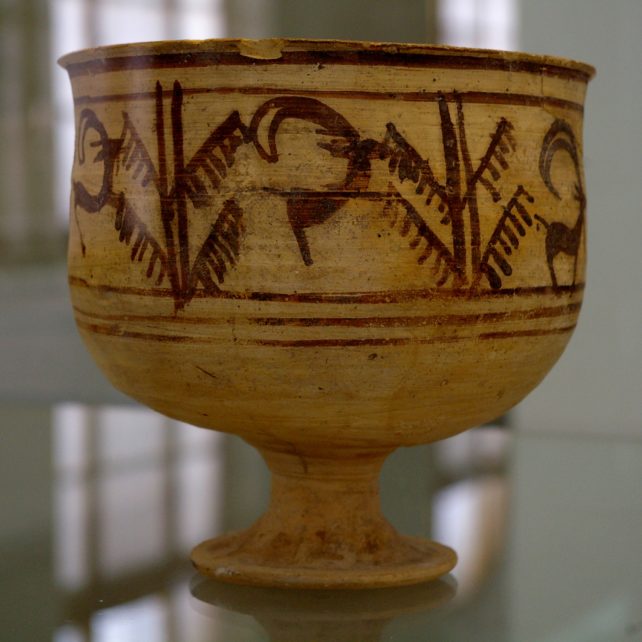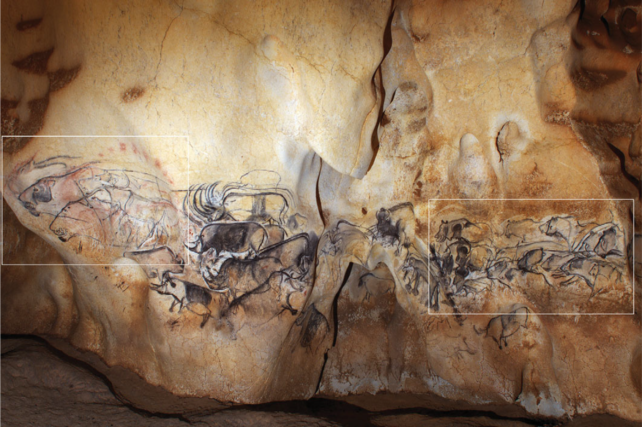From France to Indonesia and Australia, ancient life is painted across the walls of darkened caves, seemingly motionless silhouettes in earthen colors that echo an earlier time.
But in recent years, archaeologists have imagined how these simple images may have captured moving scenes in ways we had perhaps overlooked. Animation, it seems, has its roots in ancient artworks.
Earlier this year, a series of stone engravings of strange animals with melded bodies reignited speculation about the earliest forms of animation. Using 3D models and virtual reality software to bring ancient etchings to life, the team of archeologists argued that the stone artworks might have been dynamic representations of animals in motion if viewed in firelight.
Although they might be a long way from the hyper-real animation that entertains us today, these prehistoric artworks inspire awe – in that our human desire to understand, represent and recreate movement runs deep.
Another example lay for centuries covered in ash and dust in Shahr-e Sukhteh, an archaeological site in southeast Iran known as the 'Burnt City'. Here, researchers found an unassuming goblet bearing burnt red sketches of a jumping goat that springs to life when the vase is spun – much like a modern zoetrope of the 19th century.
In five sequential images, the horned goat jumps up to eat the leaves of a tree that might represent the Assyrian tree of life. But archeologists only recognized the drawings as a series of images years after the vase was unearthed in 1967.

Dating suggests the clay vase, currently on display at the National Museum of Iran, is around 5,200 years old, with some claiming it could be one of the oldest examples of animation. Although that might be contentious, at the very least Persian potters were mastering early concepts of animation and persistence of vision long before 19th-century inventors put two and two together.
"This is suggestive that humans had for thousands of years been fascinated by animal movement and had put energy into trying to capture a series of sequential images," says Leila Honari, a Persian animator and art scholar at the University of Griffith in Australia, writing in the journal of Animation Studies in 2018.
As a paleolithic researcher and filmmaker Marc Azéma describes in a 2015 paper, there are – if we pause to look closely – many more examples of Palaeolithic artists breathing life into their artworks.
Sprawling, graphic, and often chaotic narrative scenes captured movement with repeated sequences. For instance, the Grand Panneau of the Salle du Fond, an over 10-meter-long (33 feet) hunting scene found inside the Chauvet Cave in France, is filled with horses and bison and features cave lions that reappear to chase their prey along the wall. It has been dated to around 32,000 years old.

In Indonesia, some 12,000 years earlier, people on the island of Sulawesi painted panoramic scenes stretching across limestone walls depicting supernatural beings wrangling buffalo – in what is thought to be the oldest story ever found.
While these narrative displays are majestic, Honari writes that "the Burnt City's goblet indicates the knowledge of its creator in conceiving a series of images as a movement sequence."
"The ancient potter created 'key frames' that contain a very basic level of now-classic animation principals such as squash and stretch, anticipation and even timing and spacing" to create a vase that "must be the result of years and years of trial-and-error experiments," Honari adds.
Split-motion sketches were also long ago used to capture moving body parts. These artworks, like the stone etchings, described earlier this year, superimpose animal forms that appear, at first, to have one too many heads or more legs than usual.
But, as Azéma explains, these prehistoric drawings depict animals galloping along, tossing their head, or swatting their tails from side to side – akin to sequences seen in flipbooks. Sometimes barely sketched contour lines around the head or legs also convey a sense of motion.
"An eight-legged bison drawn in the Alcôve des Lions in Chauvet Cave proves that split-action movement by superimposition was already used from the Aurignacian [period]" of some 35,000 years ago, Azéma writes. "This graphic illusion achieves its full impact when the light from a grease lamp or a torch is moved along the length of the rock wall."

Ancient bone discs and two-sided plaques bearing split-motion images of animals have also been found and were likely used to create entertaining or symbolic visual illusions.
But no matter the form or age of these artworks, they still tell a story, one that we can only piece together at a distance. Animations or not, we can still marvel at ancient cave paintings that transport onlookers to other worlds long before our time and reorient our understanding of what it means to be human.
https://news.google.com/__i/rss/rd/articles/CBMiYGh0dHBzOi8vd3d3LnNjaWVuY2VhbGVydC5jb20vdGhlLXdvcmxkcy1vbGRlc3QtYW5pbWF0aW9ucy1zdHJldGNoLWFsbC10aGUtd2F5LWJhY2stdG8tY2F2ZS10aW1lc9IBAA?oc=5
2022-12-26 22:22:31Z
Bagikan Berita Ini














0 Response to "The World's Oldest Animations Stretch All The Way Back to Cave Times - ScienceAlert"
Post a Comment